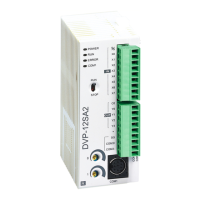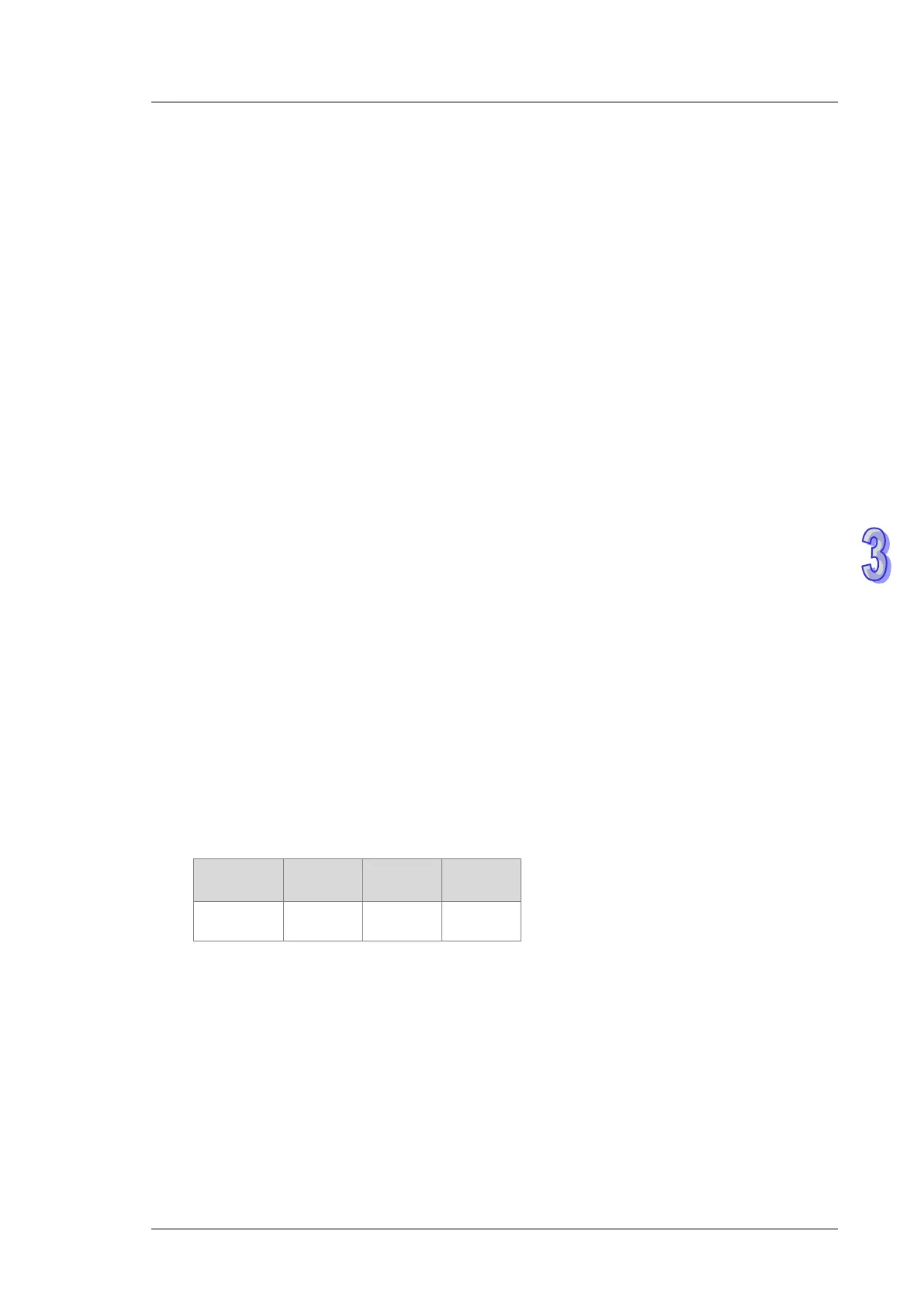3. Instruction Set
4. The operand S
3
and S
4
specify source data registers and data length. For example:S
3
specifies D150 and the value in S
4
is 10. The instruction ETHRS will send 10 bytes of data,
starting from the low byte in D150, D151, D152 and so on. Users can use the instruction DTM
to transform 16-bit data into 8-bit data when the transformation is required. The setting range
for S
4
is 1~200 words. If the setting values exceed the setting range, the system will use the
minimum (1) or the maximum (200) to operate.
5. The operand D
1
specifies a destination data register. For example, D specifies D10 and D10 is
the received data length; the unit is byte. The data received will be stored starting from D11,
low byte in D11, D12, D13 and so on. The maximum receiving data length is 200 words; data
length exceeds this limit will not be stored in D. Users can use the instruction DTM to transform
16-bit data into 8-bit data when the transformation is required.
6. D
2
specifies the reception completion flag and only M device can be used. When the
instruction is executed, and the transmission of packets is complete, this flag will be set to ON.
Users can learn from this flag to see if the transmission is complete or not. Once it is set to ON,
users need to set it to OFF. When there is any error occurred during the instruction execution
or any timeout occurred, the flag will not be ON.
7. Once the instruction is executed, the communication begins. There is no need to use any
special flag to trigger the sending. When the instruction is executed, there will be a special M
shown to indicate the execution.
8. There is no limitation on the times of using this instruction in the program. However, only one
instruction can be executed at a time.
9. When the instruction is forcedly stopped, the communication will also be stopped. And the
completion flag D
2
will not be ON.
10. When this instruction is executed, do not use the Online Mode; otherwise errors may occur
when receiving and storing data.
11. This instruction is available for the following models and firmware versions.
Series ES2-E 12SE 26SE
V1.08 V1.88 V1.0
(For mode 4 in S
2
, it is only available for SE PLC CPU with firmware V1.95 or later and ES2-E
with firmware V1.6 or later.)

